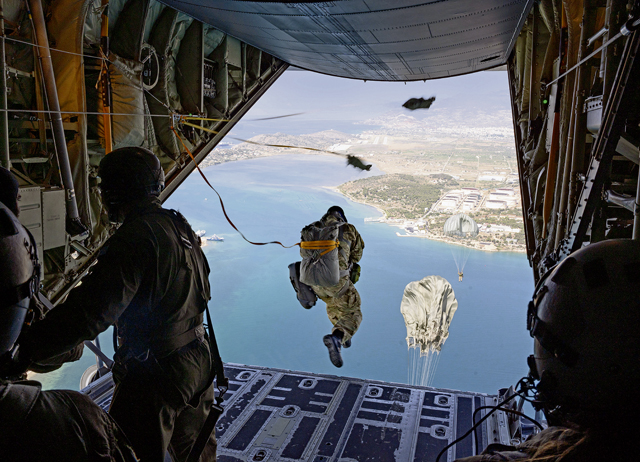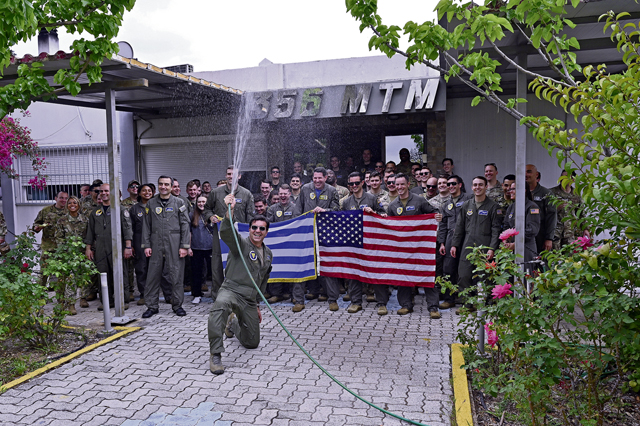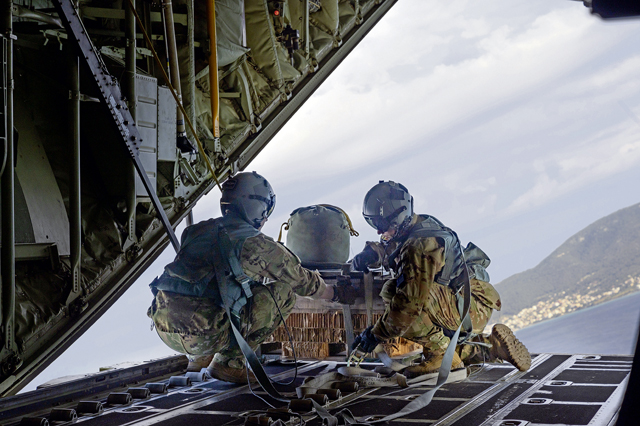
Stolen Cerberus X, a joint training exercise involving members from Team Ramstein and the Hellenic air force, concluded its tenth annual iteration at Elefsina Air Base, Greece, May 11.
Stolen Cerberus is a two-week flying training deployment hosted by the 37th Airlift Squadron, and aims to enhance interoperability and airlift capabilities between U.S. and Hellenic armed forces, as well as strengthen bilateral defense ties and execute both aeromedical evacuation and jump training in the U.S. European Command area of responsibility.
To achieve these objectives, three U.S. Air Force C-130J Super Hercules aircrafts assigned to the 37th AS, from Ramstein Air Base, and two Hellenic air force C-130H Hercules aircraft, assigned to the 356th Tactical Airlift Squadron at Elefsina AB, were employed during the exercise.
However, it was the hundreds of personnel from Team Ramstein and the Hellenic armed forces who made the exercise a success.
“Every unit that we’ve had down here has performed phenomenally, and have all worked so hard to make this exercise run smoothly,” said U.S. Air Force Capt. Andy Wilson, 37th Airlift Squadron Stolen Cerberus detachment commander.

It wasn’t just the aircrew and jumpers executing the mission Wilson said, but there were Airmen behind the scenes working 12-hour days every day, who understood the importance of the mission, and are the reason it came together.
All the behind-the-scenes work allowed participants, including the 37th AS, to learn new skills they are unable to perform in Germany such as black-out landings and lower-altitude flight maneuvers. The opportunity to hone these skills not only makes units more capable, but also strengthens ties and interoperability with our NATO ally.
“The ability to practice something that is completely new for us at the 37th AS has made us a more well-rounded operation that is ready for any real-world scenarios.” said U.S. Air Force Capt. Mike Pieschl, 37th Airlift Squadron Stolen Cerberus mission commander.

In addition to training together, Stolen Cerberus X enhanced overall coordination with the Hellenic forces, reaffirming the United States’ commitment to boosting partner forces’ capabilities, readiness and responsiveness.
“This is my first time flying with the Hellenic air force,” Pieschl said. “It’s amazing these teams can come together every year and come up with new, effective training and operate together in a completely new environment to us. I think it speaks to the partnership that has been built over the last 10 years and it is important to have that relationship around Europe.”
At the end of the exercise, both the U.S. and Hellenic forces expressed their appreciation for their long partnership, which they intend to sustain generations to come. Preparations for Stolen Cerberus XI are already underway.







